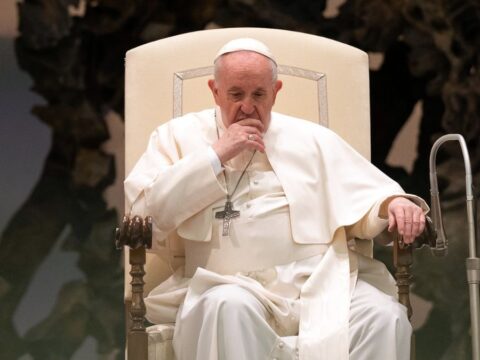When I first became a Christian at the age of 19, I readily purged my music, movies and reading material of anything I perceived as remotely un-Christian. Almost nothing passed that particular test. For someone whose sins had just been forgiven, I was rather heartless.
So when I moved to Jesus People USA, a Christian commune in Chicago, a few years later in 1989, I was happy to discover that they, too, had some guidelines about cultural engagement. The pastoral team, and by extension, most of the core community members, believed more or less in the maxim of “garbage in, garbage out” — replacing secular culture with Christian whenever possible to avoid temptation. If you were to listen to music in the community, it had to be Christian.
You may unsubscribe from any of our newsletters at any time.
Many of the people joining the community by this point didn’t desperately need to have those sort of decisions made for them. But hundreds willingly gave up the right to listen to the radio and make their own decisions about when to change the channel. This was understandable. People who had first formed the community 20 years or so beforehand had needed to distance themselves from their old lifestyles, which had included a lot of thoughtless promiscuity and excessive alcohol and drug use. Music had been a big part of that lifestyle for them.
Movies and TV also presented a challenge. The older community members encouraged a general avoidance of anything R-rated. That was pretty easy. The few TVs and VCRs in the community were mostly in common living rooms. Sex and nude scenes were referred to as “dings,” and more often than not, a designated pillow man would cover the screen. Sometimes the pillow man would stand in front of the screen longer than necessary, resulting in pillow talk from the audience such as “scene’s over,” which would then devolve into pillow-yelling: “Sit down. We’re missing something important!”
Of course we were missing something important— the chance to not only think for ourselves about the place of media in our lives but to explore the human condition through it. Human sexuality? Only expressed through marriage by the “spiritually mature.” Think you might be gay? No question, you were in need of “healing.” Depression and other mental illnesses? Clearly to be handled by prayer and Christian self-help books.
While our community had reasonable values when it came to economics, working with the poor and community service through the homeless shelters we operated, there was a huge disconnect when it came to other issues. Almost nowhere in Christian music or media of the time were frank discussions of sexual and gender identity or mental health.
“I’ve left that church behind but I’d like to think I haven’t left the church behind, if it makes sense. For me, the church is ‘out there’ now, beyond artificial boundaries and the need for cultural homogeneity.”
For those who already suspected the community’s approach to media might be a bit simplistic, it could be hard to feel like a good member. As the years passed, leaders’ and older members’ own kids grew up and demanded the comforts of U2 and beyond, rendering such music policies moot. People in the community became able to afford televisions and VCRs, and with doors shut, people watched what they wanted. Lo and behold, the community restrictions were lifted and no one grew horns.
Of course some members bristled with comments about “holiness.” I’ll never forget when one older member poked his head into a living room to see a horror movie playing on the TV. “Praise the Lord,” he muttered sarcastically and shut the door a little louder than was necessary. I’ve never forgotten that sound. If everywhere a Christian goes is church, then that was the sound of the church door for me when it came to my need to explore certain subjects through media. A loud slam.
I’ve left that church behind but I’d like to think I haven’t left the church behind, if it makes sense. For me, the church is “out there” now, beyond artificial boundaries and the need for cultural homogeneity. Its liturgy is often presented in movies and music that you, sadly, would never see nor hear in a physical church building, but nonetheless invites all of us to meditate on deeper things.
This is the fifth in a series of blogs by Dave Canfield.













